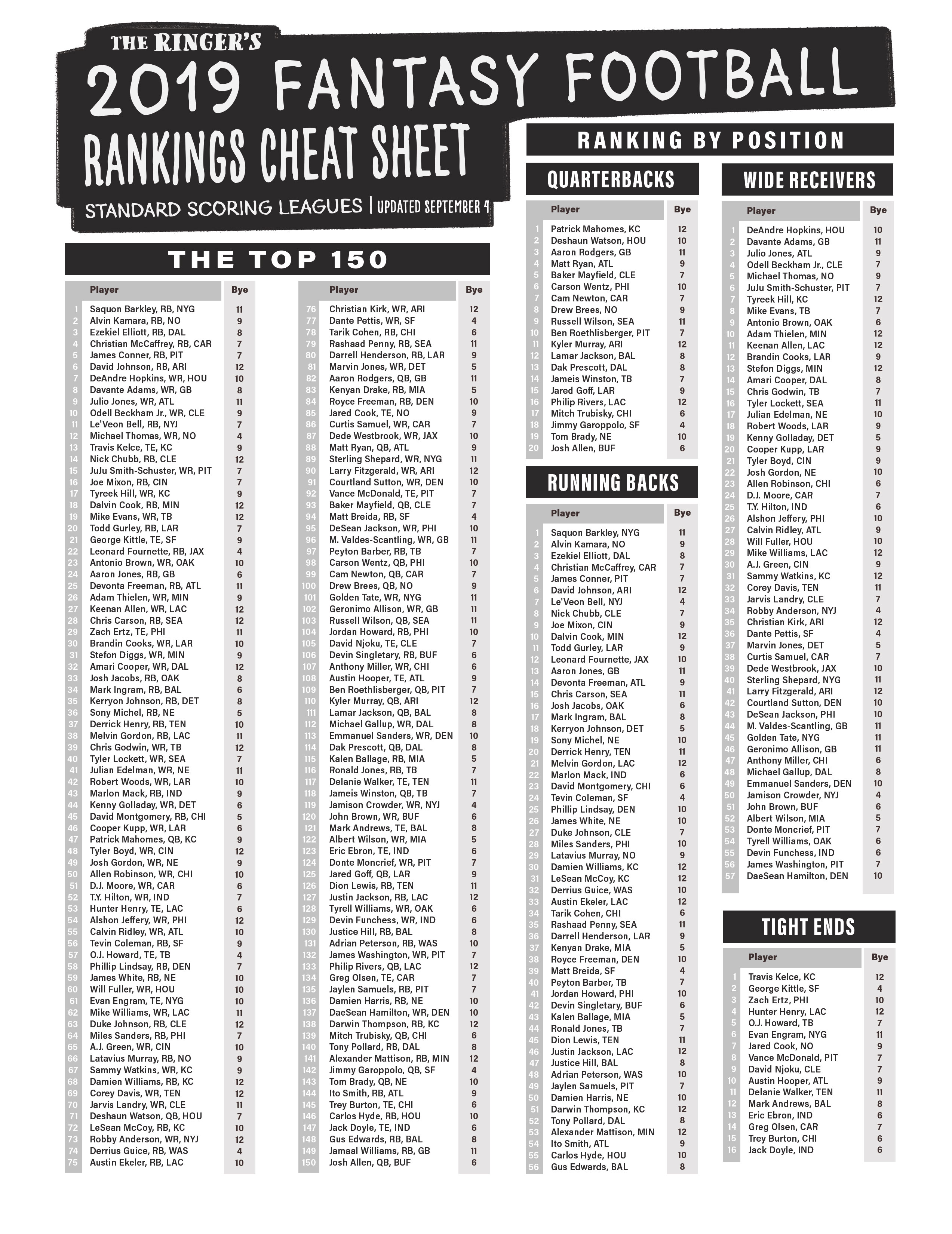The NFL Draft. A crucible of dreams, a nexus of talent, and a high-stakes game of calculated risk. Every year, the hopes of franchises hinge on the selection of college players, hoping to unearth the next generation of superstars. Central to this intricate process are NFL Draft positional rankings, a complex evaluation system that attempts to quantify and categorize the potential of hundreds of aspiring professionals.
These rankings, meticulously crafted by analysts, scouts, and experts, provide a framework for understanding the relative value of players at each position. They represent a blend of objective metrics, subjective evaluations, and predictive modeling, aiming to forecast how these athletes will perform at the professional level. But how accurate are these projections? What are the inherent limitations of ranking players based on potential, and how do these rankings influence the decisions made on draft day?
The genesis of positional rankings can be traced back to the early days of the NFL Draft itself. As the league grew and the talent pool expanded, the need for a structured evaluation system became apparent. Early rankings were rudimentary, relying heavily on collegiate performance and physical attributes. Over time, they evolved to incorporate more sophisticated metrics, including advanced statistics, film study, and psychological evaluations.
Today, NFL Draft rankings by position play a crucial role in shaping team strategy. They provide a baseline for player valuation, influencing trade decisions, draft positioning, and contract negotiations. For teams seeking a franchise quarterback, a top-ranked signal-caller can be worth a king's ransom. Conversely, a highly-ranked defensive end might be the missing piece for a team looking to bolster its pass rush.
The importance of these rankings extends beyond the front offices of NFL teams. They fuel endless debates among fans, drive media coverage, and contribute to the overall excitement surrounding the draft. They provide a common language for discussing player potential, and a lens through which to analyze the decisions made by teams.
Understanding NFL Draft positional rankings requires a grasp of the evaluation criteria employed by analysts. These criteria vary by position but generally include athleticism, skill level, collegiate production, character, and injury history. For quarterbacks, arm strength, accuracy, and decision-making are paramount. For wide receivers, speed, route running, and catching ability are key. For offensive linemen, size, strength, and technique are critical.
One benefit of draft positional rankings is they provide a structured approach to player evaluation, offering a comparative framework for assessing talent across different positions. They also facilitate informed decision-making by providing teams with insights into player strengths and weaknesses. Finally, these rankings generate excitement and engagement among fans, contributing to the overall popularity of the NFL Draft.
Advantages and Disadvantages of Draft Ranking by Position
| Advantages | Disadvantages |
|---|---|
| Provides a structured evaluation system | Subjectivity in rankings can lead to inaccuracies |
| Facilitates informed decision-making | Overemphasis on rankings can overshadow other important factors |
| Generates fan engagement and excitement | Rankings can fluctuate based on limited information |
Best Practices for Using Draft Rankings:
1. Consult multiple ranking sources.
2. Consider team needs and scheme fit.
3. Watch game film to form your own assessment.
4. Don't overvalue combine results.
5. Be aware of positional scarcity.
Frequently Asked Questions:
1. What is the purpose of NFL Draft positional rankings? Answer: To evaluate and categorize the potential of draft prospects.
2. Who creates these rankings? Answer: Analysts, scouts, and media outlets.
3. How accurate are the rankings? Answer: They are projections, not guarantees of future success.
4. What factors influence player rankings? Answer: A combination of athleticism, skill, production, character, and injury history.
5. How do teams use draft rankings? Answer: To inform their draft strategy and player valuations.
6. Can rankings change leading up to the draft? Answer: Yes, based on new information or performance in pre-draft events.
7. Are there different types of rankings? Answer: Yes, some focus on specific positions, while others offer overall rankings.
8. Where can I find draft rankings? Answer: Numerous sports websites, publications, and apps provide draft rankings.
Tips and Tricks for Utilizing Draft Rankings: Remember that rankings are just one piece of the puzzle. Don't solely rely on them; conduct your own research and watch game film to form your own opinions.
In conclusion, NFL Draft positional rankings are a powerful tool for evaluating talent and predicting future success in the league. They provide a framework for understanding player value, influence team strategies, and fuel the passionate discussions among fans that make the draft such a compelling spectacle. While not infallible, these rankings offer valuable insights into the complex process of player evaluation and provide a glimpse into the future of the NFL. Understanding the nuances of draft rankings, acknowledging their limitations, and using them as a part of a broader evaluation strategy are essential for anyone seeking to decipher the intricacies of the NFL Draft and predict the next generation of gridiron stars. By acknowledging the subjectivity inherent in these rankings and focusing on a holistic evaluation of player potential, fans and teams alike can gain a deeper appreciation for the complexities of the NFL Draft and the challenges of projecting future success in the world of professional football.
Understanding sales tax in calhoun county alabama
Falling for the villain the eliminate the villainess trope in novels
The allure of infernal aesthetics exploring the hot demon boy pfp phenomenon
draft ranking by position nfl - Khao Tick On
2024 Nfl Draft Rankings By Position - Khao Tick On
Printable Draft Cheat Sheet - Khao Tick On


:no_upscale()/cdn.vox-cdn.com/uploads/chorus_asset/file/23973231/2022_Fantasy_Football_Rankings_Cheatsheet__2_.png)